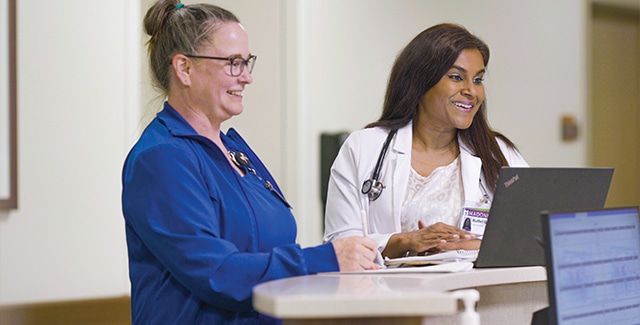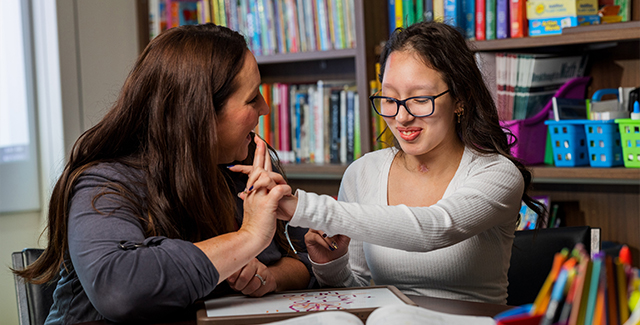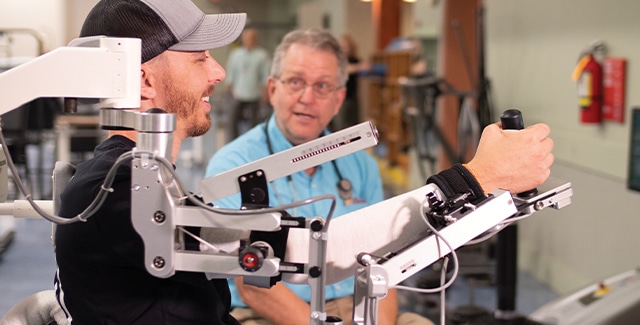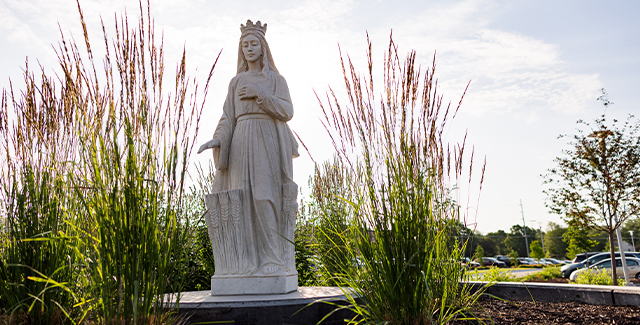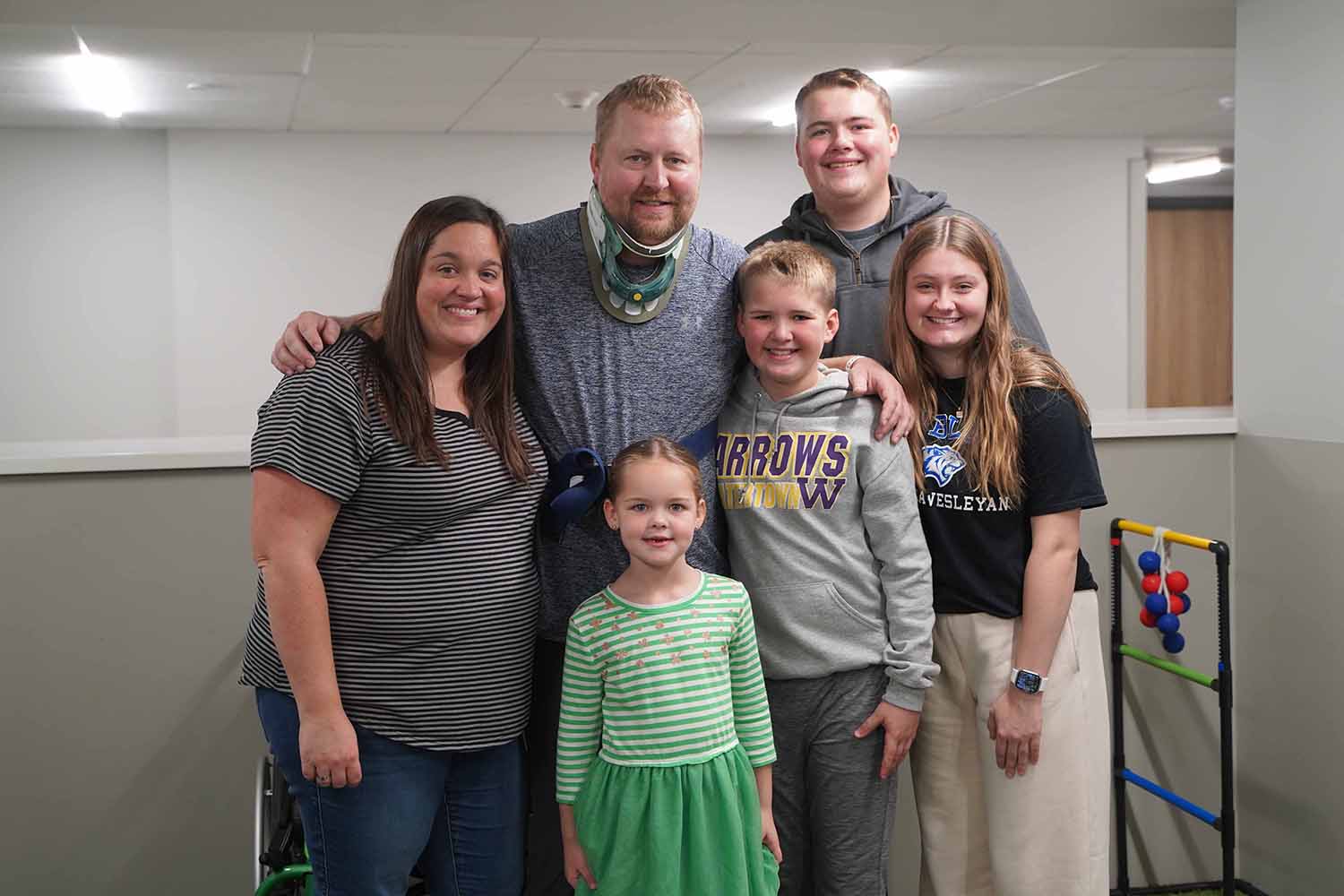Michael Blais is on a journey of courage, striving to be the best he can be for his family.
This after a routine day at work turned life-altering when a lift strap snapped, causing a freight container to fall on him.
On October 4th, 2024, Michael was airlifted to Sanford Hospital in Sioux Falls, South Dakota. He had emergency surgery on his neck where they inserted a spinal interbody cage for stabilization. He also had a dissected artery.
“I couldn’t move anything from my shoulders down,” Michael said. “I could turn my head a little bit, but I was in a neck brace. We weren’t sure if anything was going to move again.”
A week later, Michael arrived at Madonna Rehabilitation Hospitals’ specialized spinal cord injury program for injured workers and immediately got to work.
Having a cervical injury, Michael needed to work on his arms. His left arm was functioning better than his right, but his grasp required attention.
Using the Bioness H200, a functional electrical stimulation device, his occupational therapy team tried to progress his daily tasks of independence.
“His grasp was weak, so we were doing a lot of different things that would help progress it, which it did,” Dani Willey, OTR/L, DRP, a Madonna occupational therapist, said. “He was able to do quite a bit for himself, feed himself, get himself bathed and dressed.”
Michael also had activation in his legs when he arrived, which allowed his physician-led care team to focus on walking.
He began walking with the bodyweight-supported treadmill system, progressed to the Madonna ICARE by Sports Art, a motorized elliptical, and eventually used a walker to move with hands-on assistance.
“He was doing quite well,” Willey said.
Still, recovery from an incomplete spinal cord injury is never linear. While progress can be promising, setbacks can occur unexpectedly, requiring adjustments in treatment and rehabilitation goals.
“This is something that can happen and happens rarely in spinal cord injury rehabilitation,” Dr. Paul Krabbenhoft, Madonna’s spinal cord injury program medical director, said. “In this particular case, the damage was done to the nerves, but they were still able to operate at a certain level to allow him to do a decent amount of walking. But with time, the damage that had been done to those nerves was such that they decided to not function at the optimal level.”
Krabbenhoft consulted with neurosurgery and did imaging studies and other scans to pinpoint what was happening. Still, everything came back normal, indicating that this was a natural outcome of Michael’s spinal cord injury.
In Michael’s case, early improvements gave way to new challenges, forcing both his Madonna care team and his family to rethink their approach.
“When he left, it was going to be more of what was it going to look like from a wheelchair perspective versus that walking perspective,” Willey said. “We had to re-evaluate what it was going to look like long term for him.”
In January, he transitioned from inpatient to Madonna’s intense rehabilitation day outpatient program. Michael joined his wife, Ashley, in Madonna’s family housing and utilizing that resource allowed her to be an active participant in his recovery.
Michael learned to be independent from his wheelchair and passed his driving evaluation, using hand controls. But despite the setbacks, Michael continued to move forward with determination.
“It’s like you’re being reborn again. You just have to learn everything,” Michael said. “In a way, every day is a guess and seeing what’s going to happen, because every day has been different for me. Some days I can’t hardly squeeze my hands. Some days I can’t stand or hardly move my legs. But we’ll just keep on showing everybody there’s nothing going to stop me.”
And after a long five-month rehabilitation journey, Michael is cherishing his life.
“I get to be here for my wife and my kids and show them that we can still do everything, just at a different level,” Michael said. “This is a kind of like a second chance.”

